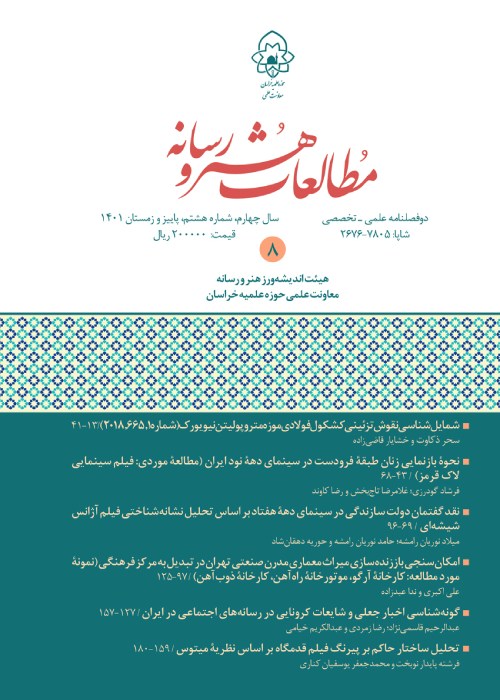Typology and Validity of the Situations in the Quran's Storiesfrom the Perspective of Jaap Lintvelt
The Quran is a book of knowledge and guidance in which stories told to achieve the purpose. The stories can be considered from the aspects of validity. Narrative or science of action is a branch of science that studies narrative techniques and structures that are embodied in the literature, too. This science examines the internal techniques of a relationships itself narrated from a story. Jaap Lintvelt is a narrative that bases its definition on a actors on the one hand and the narrator and audience on the other hand, too. Jaap Lintvelt focused on the dual interaction between the level of narrative practices point to the time of and place of the actors. He believes that narrator and audience are in space and time here and now and are in connection with each other. The narrator, with a time and space cut, convert the connection to the detachment and narrates the event that happened one day in the past. This separation between the narrator and the audience, on the one hand and the actors, on the other hand, determines the narrative definition in his view. Jaap Lintvelt has provided a model of his narrative and typology positions based on these levels, that Quranic stories can be analyzed from this prespective. In this research two stories from the prophets (The prophet Noah and The prophet Saleh) and two stories from the stories of non-prophetes (Companions of Elephants and Companions of Cave) are selected az examples. The research method in this article is narrative analysis. After studying these four Quranic stories for Noah, Saleh, Companion of Elephant and Companion of the Cave, It could be said that there is a homogeneous world in all these four stories. The narrative typology in these stories is text oriented in which the story is full of perspective and the directions of the narrator is expressed to the audiences. The narrator-actant (God) tries to use the words for the audience p (The Prophet Mohammad). The narrator tries to believe that in the shado of the help of the God, the truth will be overcome by falsehood. These stories are true and has historical fact.
- حق عضویت دریافتی صرف حمایت از نشریات عضو و نگهداری، تکمیل و توسعه مگیران میشود.
- پرداخت حق اشتراک و دانلود مقالات اجازه بازنشر آن در سایر رسانههای چاپی و دیجیتال را به کاربر نمیدهد.


